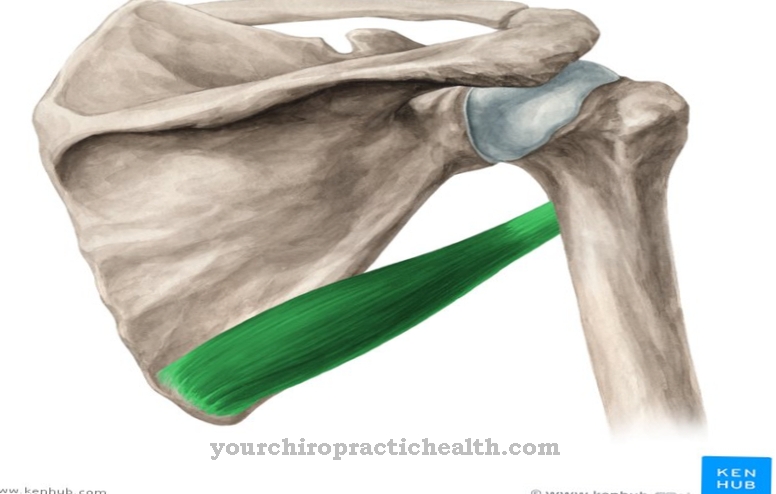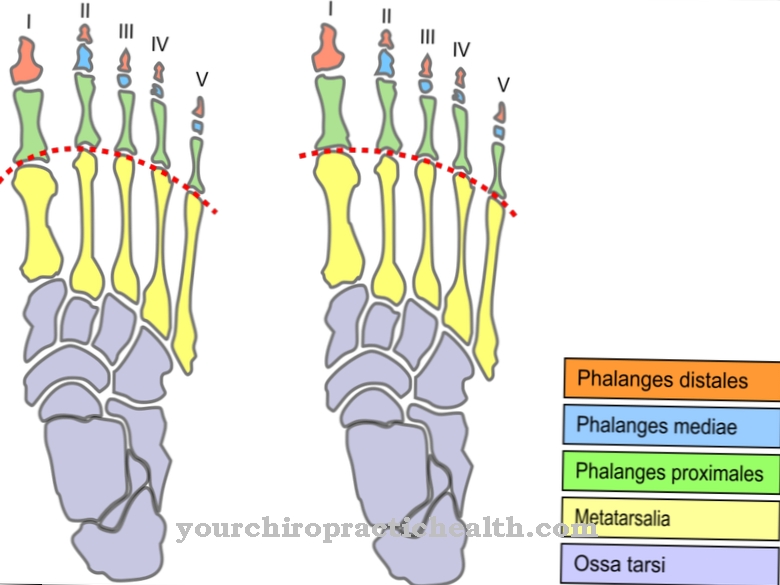The Metencephalon or Hind brain belongs to the rhombencephalon and is made up of the cerebellum (cerebellum) and the bridge (pons). Numerous centers and cores contribute to motor skills, coordination and learning processes. Above all, malformations and lesions that can lead to failures in the functional areas have pathological relevance for the metencephalon.
What is the metencephalon?
The metencephalon is a part of the brain that belongs to the hindbrain (rhombencephalon). Because the metencephalon lies in the back of the head, it is also known as the hindbrain.
In the embryo, the neural tube represents the precursor of the entire human nervous system. From this, the so-called cerebral vesicles develop within the first 25 days. In the embryonic development, the metencephalon forms a coherent structure as the fourth cerebral vesicle, which later divides into the cerebellum and pons and then forms the finer structures.
Anatomy & structure
The metencephalon consists of two subunits: the cerebellum and the pons. The cerebellum has two hemispheres. In the cross-section, three layers of the cerebellar cortex can be distinguished, which not only differ histologically from one another, but also contain specific nerve types.
The white matter of the cerebellum, which is characterized by numerous nerve fibers, is located in the marrow under the cortex. Here there are various nuclei, which represent nodes in information processing. In addition to the nucleus emboliformis (also known as the nucleus interpositus anterior) and the nucleus globosus (or nucleus interpositus posterior), which are close together, the nucleus dentatus and the nucleus fastigii belong to them.
The other part of the metencephalon is the pons or bridge. This structure contains numerous nerve tracts and forms the most important link between the elongated spinal cord, spinal cord and peripheral nervous system on the one hand and the rest of the brain on the other. Various nuclei are also located in the pons: the nuclei motorii, the bridging nuclei (nuclei pontis), the equilibrium nuclei (nuclei vestibulares) and the nucleus sensibilis pontinus. Part of the fourth ventricle also belongs to the metencephalon; this is a fluid-filled cavity in the brain.
Function & tasks
The tasks of the metencephalon differ depending on the region; overall, motor functions and coordination processes are in the foreground. The pons is mainly responsible for the transmission of nerve signals and, in its function as a bridge, represents a bottleneck in the central nervous system. Various cranial nerves have their origin in the pons. Physiology summarizes the motor nuclei as the nuclei motorii. They play a crucial role in the coordination of the supporting muscles and are active when walking, for example.
In the bridge nuclei (nuclei pontis), nerve fibers converge, which are involved in learning new movement sequences and in correcting movements. The equilibrium nuclei (nuclei vestibulares) are also located in the pons; they interconnect the information from the balance organ in the inner ear with other signals and contribute to processes that require coordination. In addition to supporting motor skills, eye movements are also dependent on the equilibrium nuclei. Sensory fibers of the trigeminal nerve converge in the pontinus sensibilis nucleus. The processing of these stimuli serves protective and defense mechanisms, for example when onion vapors irritate the eyes.
The cerebellum is characterized by a wide variety of tasks that have not yet been fully researched. The four nuclei, numerous synapses and the high nerve density overall - half of all neurons in the brain are located in the cerebellum - contribute to learning and work together with higher cognitive areas. The cerebellum also controls numerous motor processes. It also controls very fine muscles that humans need to speak. Coordination, supporting motor skills, holding motor skills and movement planning are further tasks of the cerebellum.
One of the specific tasks of the nuclei in the cerebellum is the control of target motor skills in the dentate nucleus, the largest of the nuclei in the cerebellum. Nucleus emboliformis and nucleus globosus also contribute to target motor skills; in addition, they coordinate the support motor skills. The nuclei fastigii play a role in the holding motor system - both in the case of static postures and in the case of dynamic adaptation of movement sequences. Special fibers contribute to appropriate adjustments for eye movements.
You can find your medication here
➔ Medicines against memory disorders and forgetfulnessDiseases
Metencephalon diseases manifest themselves depending on the affected area. Permanent restrictions usually result from congenital malformations or acquired lesions due to circulatory disorders, traumatic brain injury, stroke, increased intracranial pressure, tumors and other underlying diseases.
Neurodegenerative diseases such as multiple sclerosis can also affect the metencephalon. In this demyelinating disease, the nerve fibers lose their insulating layer due to symptoms of inflammation; as a result, information processing is disturbed. The cerebellum, which belongs to the metencephalon, can also be affected. Multiple sclerosis lesions typically lead to ataxia: Affected people are no longer able to coordinate movements or perform correctly, even though the muscles are perfectly intact. Gait disorders are a particularly common form of ataxia.
Millard-Gubler syndrome is an example of symptoms as a result of a Pons lesion, the damage being caused by a circulatory disorder. Characteristic signs of this clinical picture are the paralysis of the face (facial paresis) and the paralysis of the eye muscle, which is responsible for outward turning movements (abducens paresis); both symptoms are manifested on the side of the body damaged by the lesion. In Millard-Gubler syndrome, the other side of the body is incompletely paralyzed (hemiparesis) and shows spastic symptoms.
Foville syndrome is also caused by damage to the pons, often due to a tumor or a circulatory disorder. The symptoms are similar to those that occur in Millard-Gubler syndrome, but hemiparesis is not associated with spasticity, but with a loss of sensibility (hemianesthesia).



























